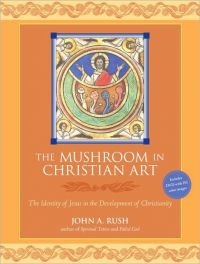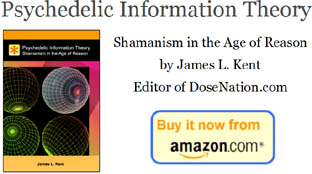Review: 'The Mushroom in Christian Art' by John A. Rush
 |
Originally published in 2011 'The Mushroom in Christian Art -- The Identity of Jesus in the Development of Christianity' by John A. Rush is a well needed addition to a burgeoning research area in psychedelic studies; namely the possible role hallucinogenic mushrooms took in the Christian religion. Rush has previously published works like 'Spiritual Tattoo' and 'Failed God' and although some of his other works have brushed against the mushroom-Christianity question, this is his first concentrated effort in the area.
Before discussing how Rush has approached the mushroom-Christianity question methodologically through art, it is necessary to first elucidate the point-of-view that he assumes. In this, Rush owes a lot to work done previously by John M. Allegro, author of The Sacred Mushroom and the Cross (1970) and Jan Irvin, author of The Holy Mushroom (2008). Firstly, the argument goes, religions all grew out of a form of shamanism, or 'fertility cults', that venerated plants and the natural world and, as part of which, hallucinogenic mushrooms and other 'entheogenic' plants were divined as gods incarnate. Soma, of the ancient Vedic text the Rigveda, would be an obvious other textual example of this. Secondly, these early fertility cults became increasingly 'corrupted' and the central hallucinogenic rite became the secret of a priest caste, and thus a tool of control. Also very close to some of the arguments that have been developed about the use of Soma.
|

Recently @ DoseNation
|
|






















The comments posted here do not reflect the views of the owners of this site.